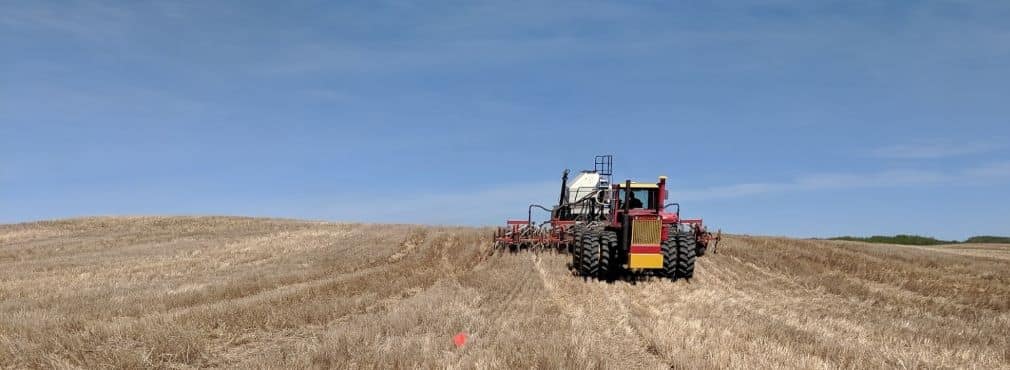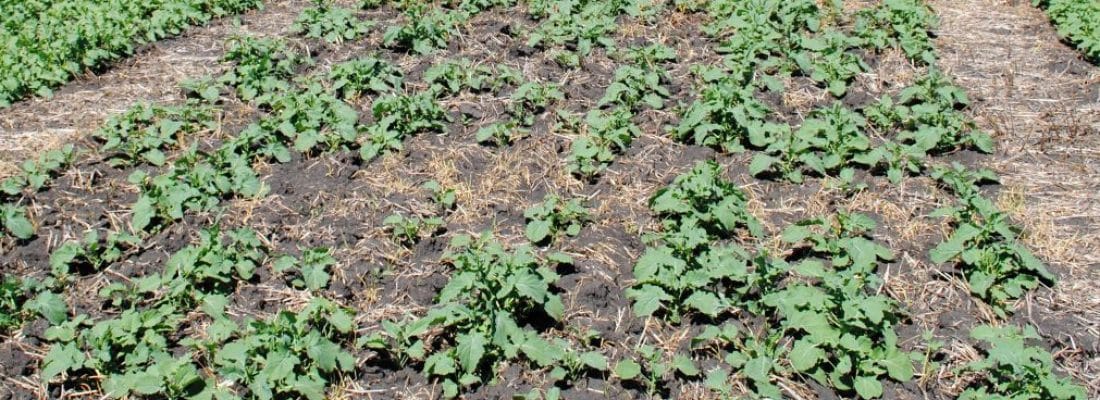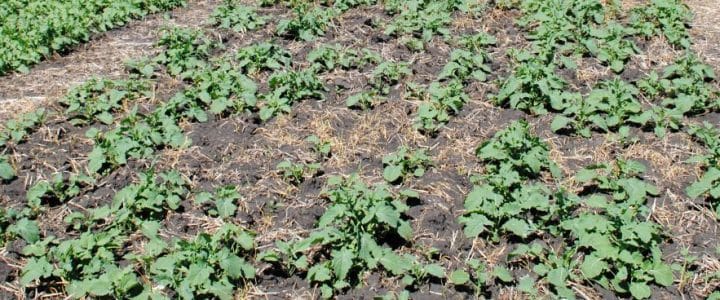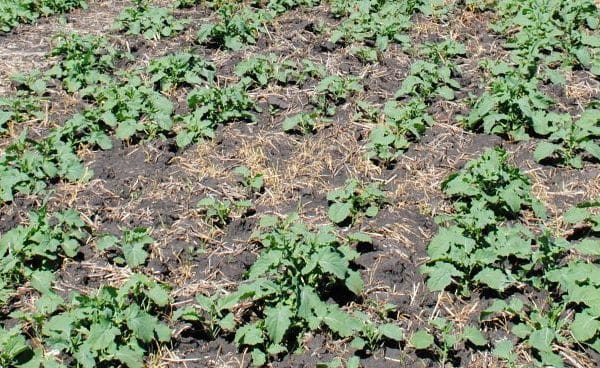The above photo depicts severe thinning in a canola plot with 60lbs of seed-placed nitrogen.
Canola is generally sensitive to seed-placed fertilizer, so careful selection of nutrients and rates in fertilizer blends is necessary to prevent crop damage and optimize nutrient use efficiency.
Important tips for best management
- Canola is generally sensitive to seed-placed fertilizer – especially nitrogen, potassium and ammonium sulphate.
- The only fertilizer that can be safely place with canola seed is phosphate, and even it has limits.
- Safe rates are generally 20 pounds per acre (40 pounds per acre of monoammonium phosphate, or MAP), and 25 pounds per acre with wider openers1 2.
- The Enhancing canola production with improved phosphorus fertilizer management research concluded that seed-placed phosphate is not recommended and most of the phosphorus fertilizer applied should be side-banded, especially when higher rates are needed.
- Although canola stands can compensate to some degree for thinning due to seed-placed fertilizer, keeping safe rates of phosphate with the seed, and placing the remaining fertilizer in a band away from the seed will help establish a uniform, earlier maturing crop.
- To test the effect of seed-placed fertilizer, turn off seed-placed fertilizer runs for a few 100-foot strips in some fields. Mark these areas and then go back and do plant counts early in the season to compare treated and untreated strips (see the On-Off Test of Seed Placed Fertility video below for details).
Seedbed utilization and reducing toxicity
The seedbed utilization (SBU) dilemma canola grower face is that narrow row width and higher opener spread will increase SBU and can make it possible to safely apply higher rates of seed-placed fertilizer. However, higher SBU also means the phosphate fertilizer young canola plants really need is spread out farther from the seed. The 20 pound per acre phosphate rate may be inadequate with high SBU. Phosphate, at the safe rate your equipment allows, should be in a tight band with the seed.

The Reducing toxicity of seed-placed phosphorus fertilizer in canola project reported that increasing SBU by either narrowing row spacing from 12 to nine inches and/or increasing opener width from one to four inches reduced phosphorus toxicity of seed-placed phosphorus fertilizer, leading to increased number of plants per unit area. However, changing the SBU did not consistently impact the plant recovery of phosphorus fertilizer applications, and SBU does not appear to be a major factor affecting utilization of fertilizer phosphorus by canola. This research also concluded that farmers who are placing nitrogen and sulphur fertilizers away from the seed have more room to increase seed-placed phosphorus fertilizer without causing significant reduction in plant density and grain yield of canola. As well, the results suggested opener configuration does not greatly influence phosphorus fertilizer recovery from seed-row placed phosphorus fertilizer.
For more on fertilizer placement, including the potential damage caused to the seed and testing the safety of seed-placed rates:
- Check out this Right rates for seed-placed fertilizer Canola Watch fundamentals article.
- Review the Canola Research Hub’s Choose the right placement for nitrogen and phosphorus fertilizer applications blog.
Nutrient-specific information
Nutrient-specific information can be found within the appropriate Nutrient Management sections, including:

The Micronutrients section of the Canola Encyclopedia offers fertilizer placement information for the following:
Learn how seed-placed fertilizer fits into the 4R Nutrient Stewardship practices.
Footnotes
- Heard, John. 2022. Safe Rates of Seed-Placed Phosphorus for Manitoba – Narrow Row and Row Crops. Manitoba Agriculture.[↩]
- Canola Watch. 2011. Safe rates of seed-placed fertilizer. Canola Council of Canada.[↩]



